We’ve recently recieved a big batch of painted Bolt Action vehicles from Bruce Murray. These early war models can be seen in all their glory below.
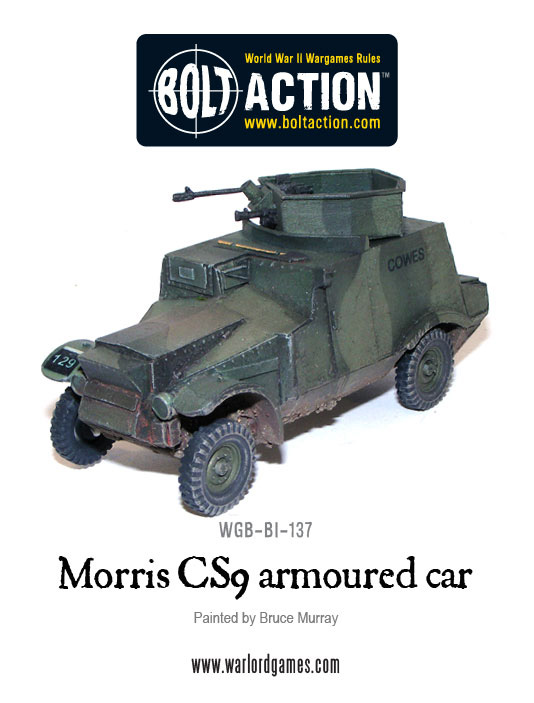 |
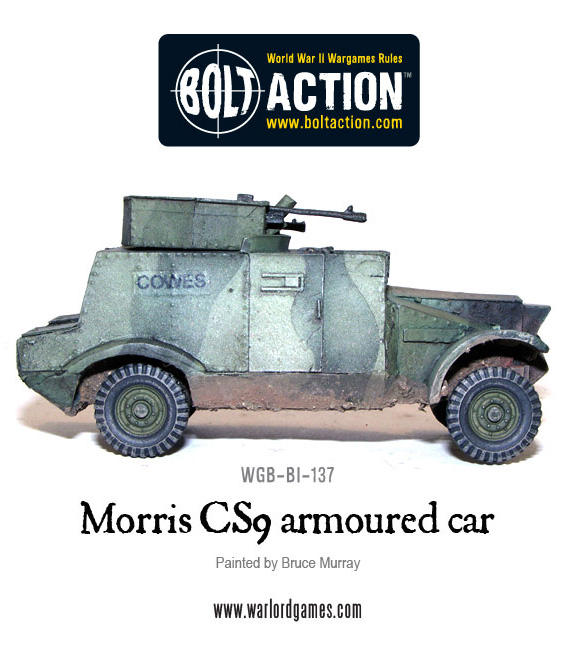 |
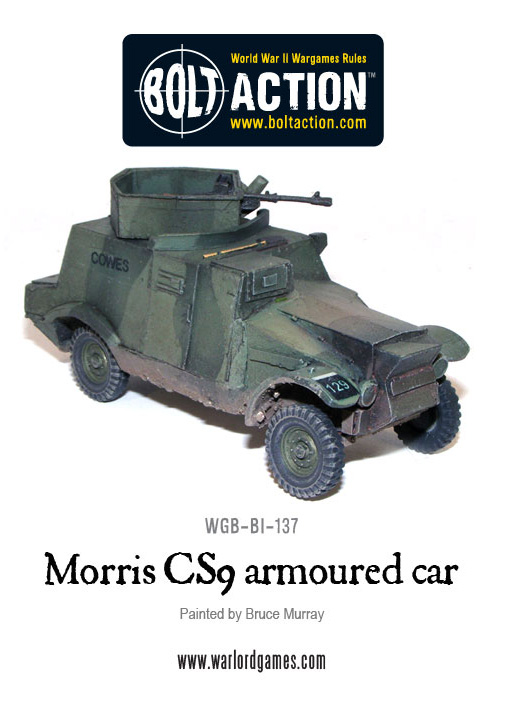 |
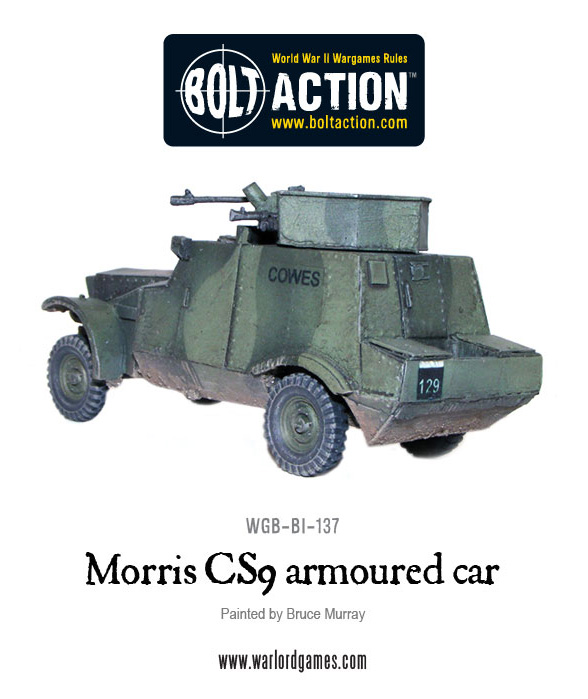 |
The open-topped Morris CS9 armoured car was used during the Battle for France by the 12th Royal Lancers and in the Western Desert by the 11th Hussars. Armed with both a Bren gun (sometimes this was replaced by a Vickers MMG) and a Boyes anti-tank rifle it was based on the Morris Commercial 15cwt lorry.
The platoon deal for the Morris CS9 can be found in our webstore.
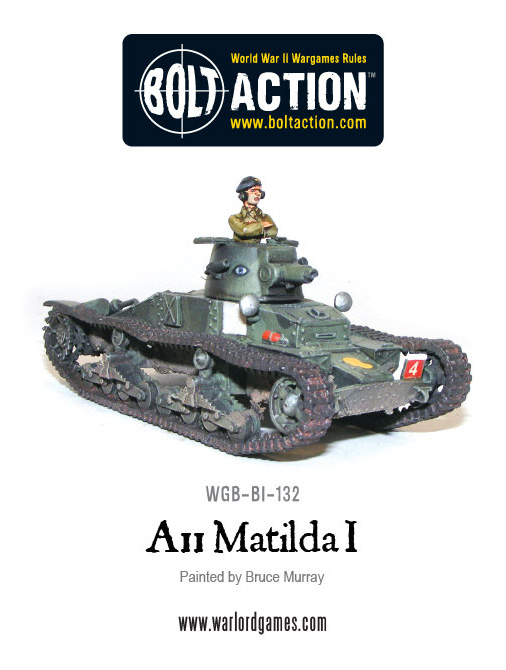 |
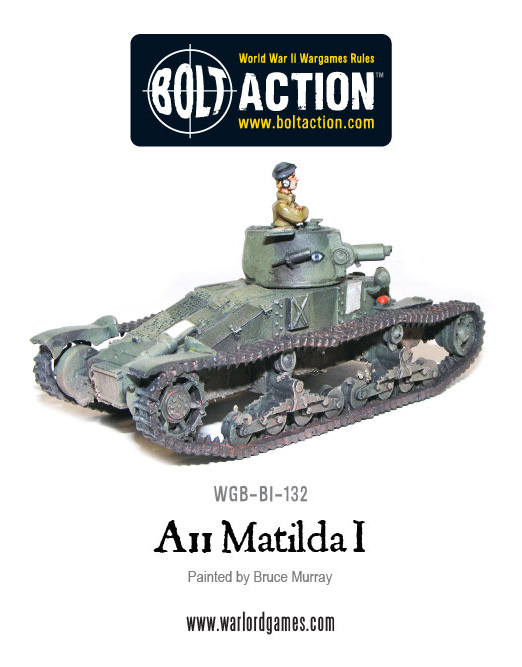 |
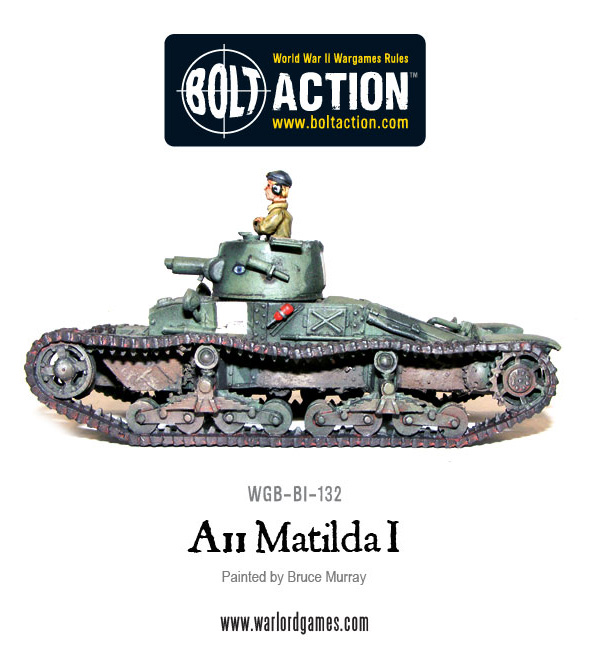 |
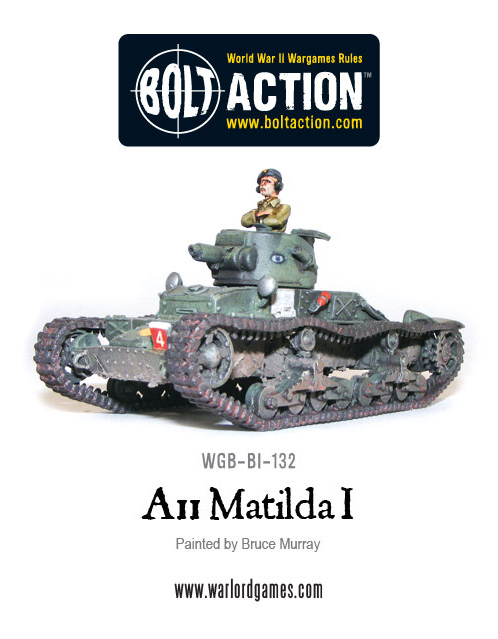 |
Amongst the most distinctive-looking tank designs of World War II, the A11 Matilda I was the first of the British infantry tanks. The A11 turret was fitted with a single heavy machine gun – either a .303 Vickers or a larger, Vickers .50. This lack of anti-tank capability was one of the compromises the Matilda I would suffer from.
The Matilda I was designed to be delivered quickly and as such utilised many components from other vehicles. Although the hull and turret were well protected against most anti-tank weapons, the tracks and running gear were completely exposed and more vulnerable than on tanks that had protected tracks.
The A11 remained in production until August 1940. One hundred and forty were produced.
The platoon deal for the Matilda I can be found in our webstore.
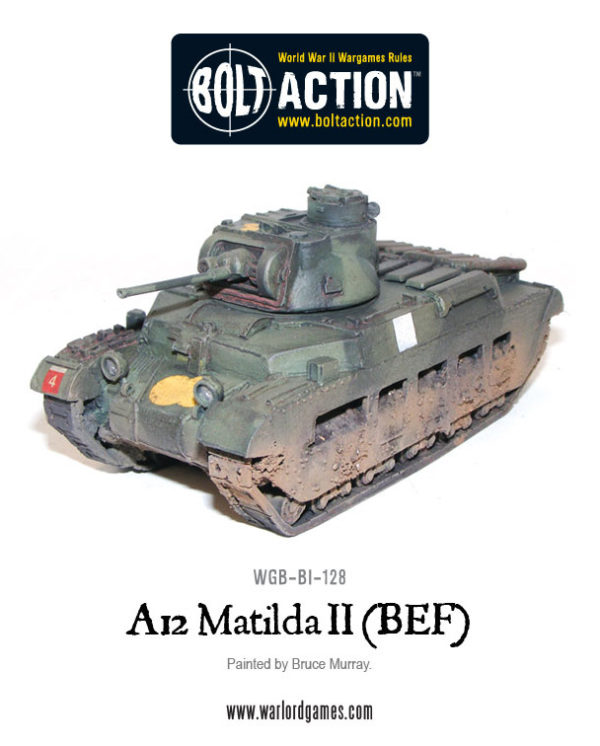 |
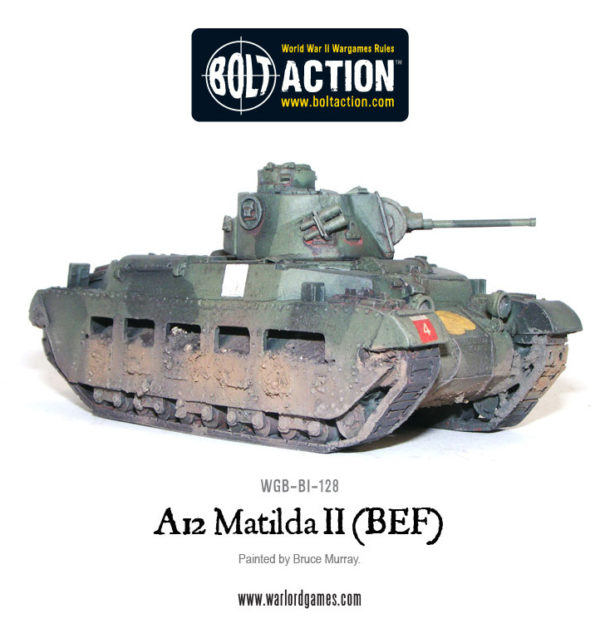 |
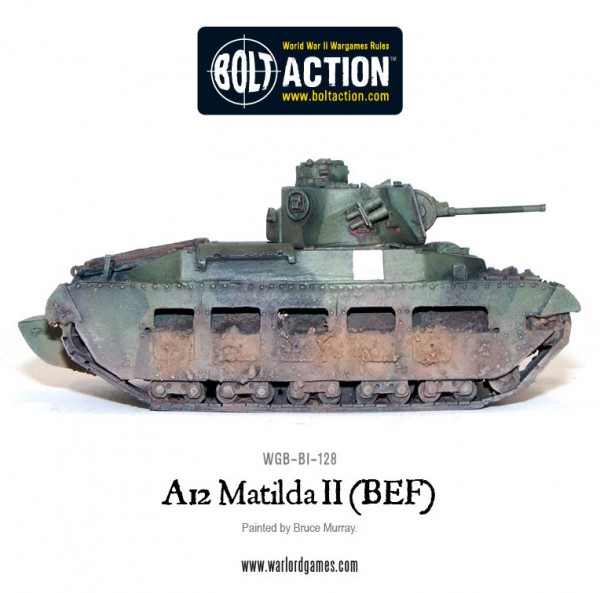 |
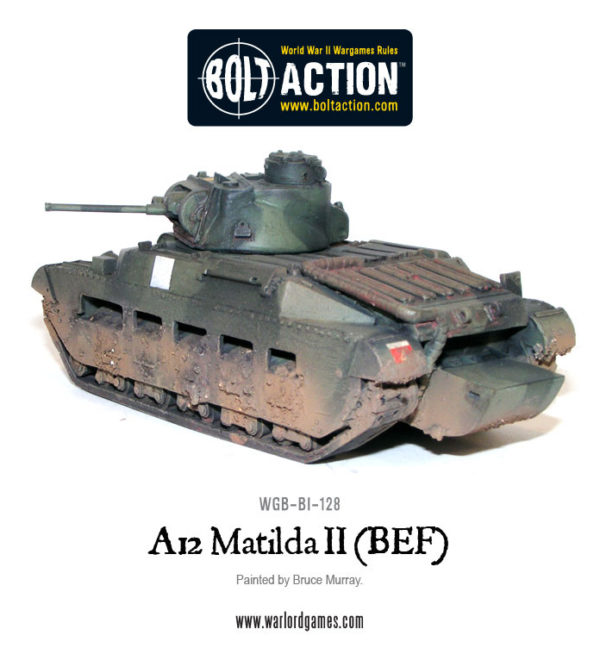 |
Replacing the Matilda I as the British Army’s infantry tank of choice, the Matilda II served from the beginning of the war, right through to the end of hostilities and took part in the action in Europe, the Pacific, Russian Front and the campaign in the Western Desert. Weighing in at 27 tons (more than double that of it’s predecessor, the Matilda I), the A12 was armed with the British QF 2pdr gun. Sadly the one weakness of the Matilda II was the lack of a high explosive shell which meant Matilda crews having to make use of their machine guns when supporting infantry.
Our A12 Matilda II is the variant found during the early stages of the war in Europe. It is differentiated from its cousin fighting in the desert by the tail skid, lowered suspension and single exhaust. Almost 3,000 A12s were produced during WWII with many being sent to Russia under the lend lease program.
Matilda I and Matilda II tanks fought together in the 1st Army Tank Brigade of the British Expeditionary Force in the Battle of France. Participating in the defence and counter-attack operation at Arras against the invasion by Germany in May 1940, Harrassing Rommel’s 7th Panzer Division.
The platoon deal for the Matilda II can be found in our webstore.
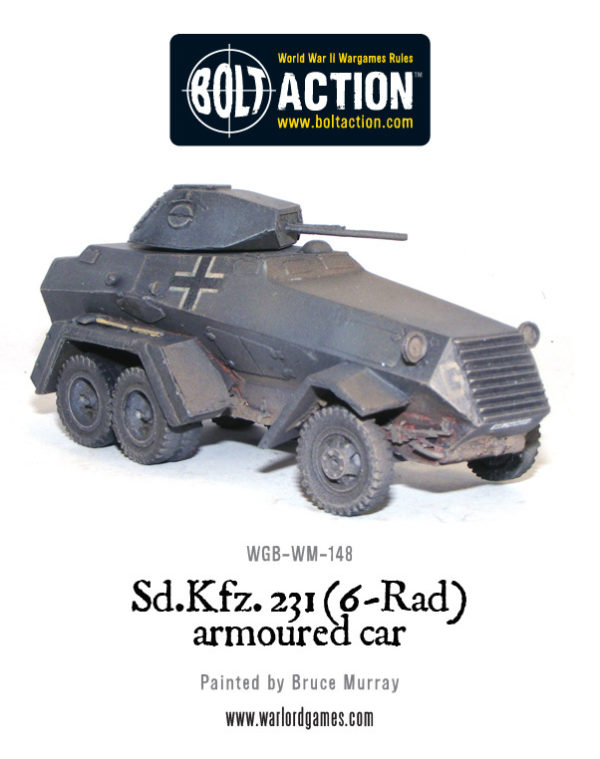 |
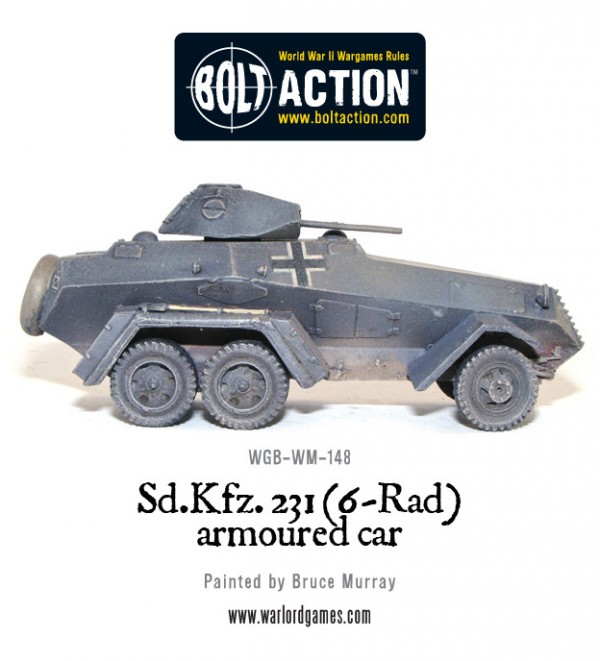 |
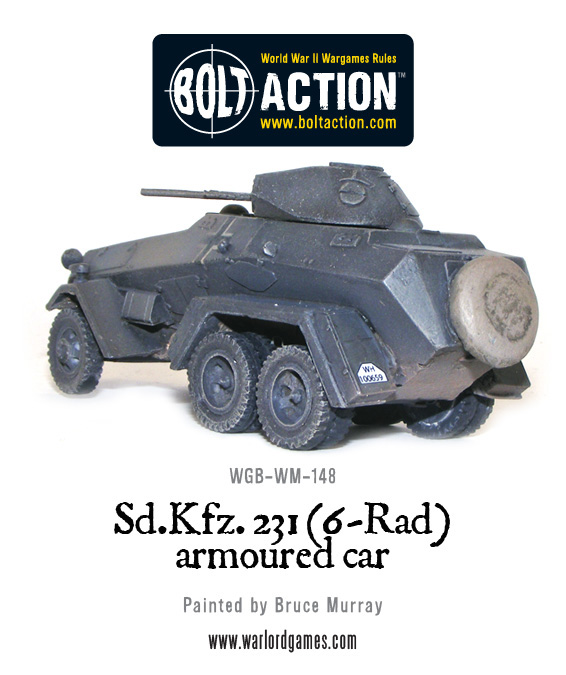 |
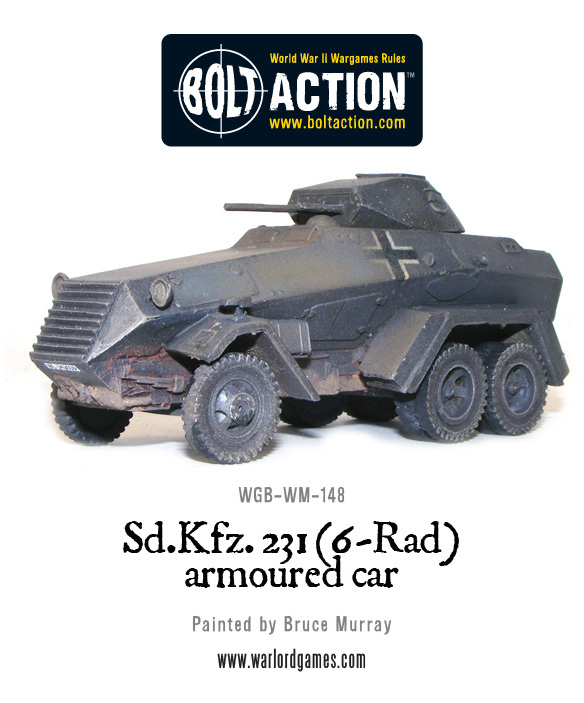 |
The 6-wheel drive Sd.Kfz 231 had excellent mobility. Used in Aufklarungs units (reconnaissance) during the early stages of the war they saw action in the Fall of France, the Blitzkrieg attack on Poland and during the invasion of Soviet Russia.
The 231 was armed with a 2 cm KwK 30 L/55 autocannon, and a Maschinengewehr 13machine gun. It had a second driver in the rear so that the vehicle could be driven either forwards or backwards with relative ease. The 231 was introduced into service in 1932 and began to be replaced in 1937 when the German Army switched production to 8-wheeled armoured cars instead of 6-wheeled. Despite being replaced, they were used by Aufklärungs (units during the Invasion of Poland, the Battle of France, and the invasion of the USSR. They were withdrawn afterwards for use in internal security and training. The crew consisted of a commander, gunner, driver, and a radio operator/rear driver.
In the German Army, armoured cars were intended for the traditional cavalry missions of reconnaissance and screening. They scouted ahead of mechanized units to assess enemy strength and location. Their primary role was to observe rather than fight enemy units, although they were expected to fight enemy reconnaissance elements when required.
The platoon deal for the Sd.Kfz 231 6-rad armoured car can be found in our webstore.






